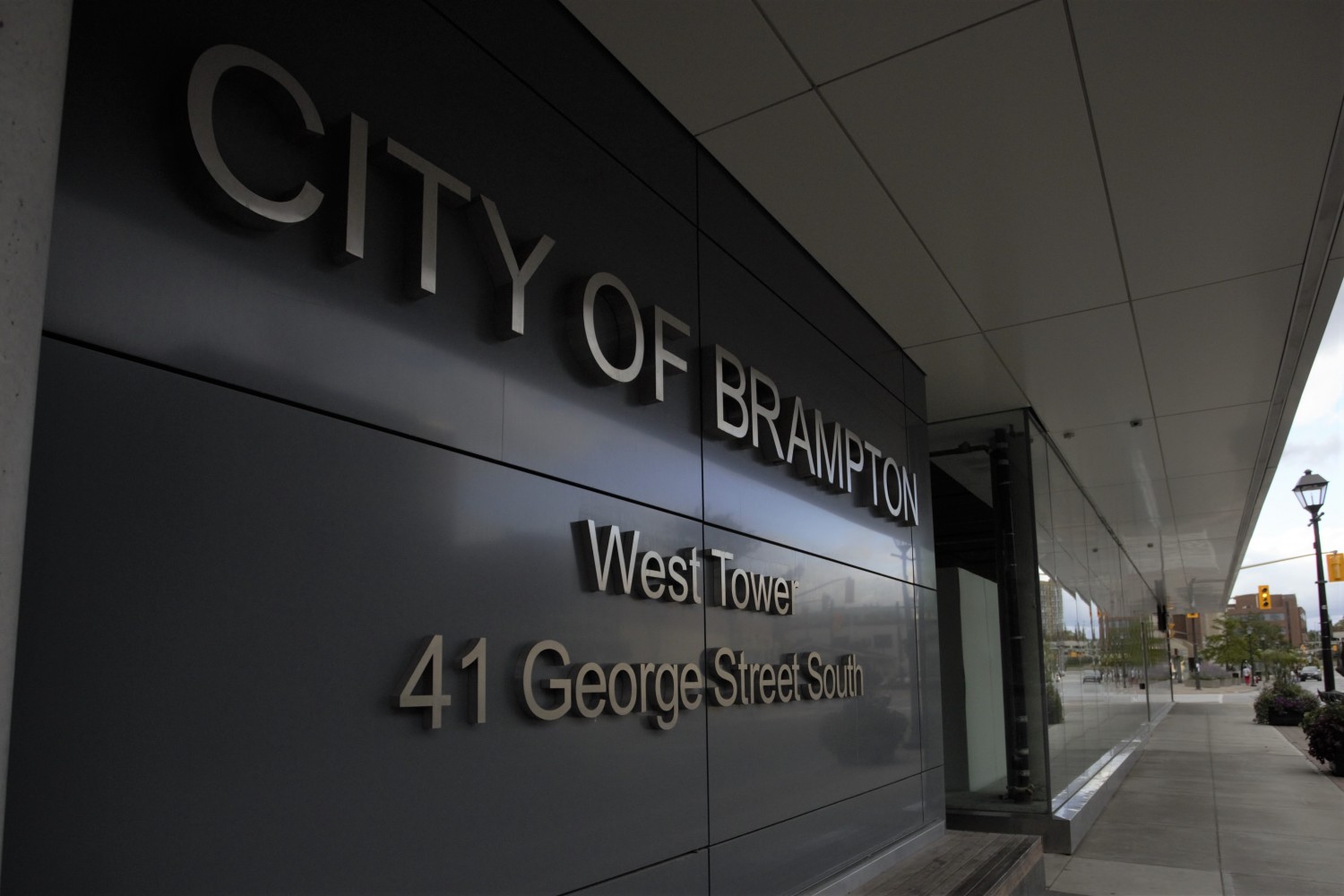
Mayor wants zero percent tax increase in 2019, staff has proposed 5.4 percent; something has to give
With the new city council firmly in place and the year’s priorities coming together, it is time to talk about how the city’s money should be spent. After a hefty 5.4 percent tax hike for 2019 was proposed by staff, Mayor Patrick Brown now wants a zero percent increase. Something will have to give.
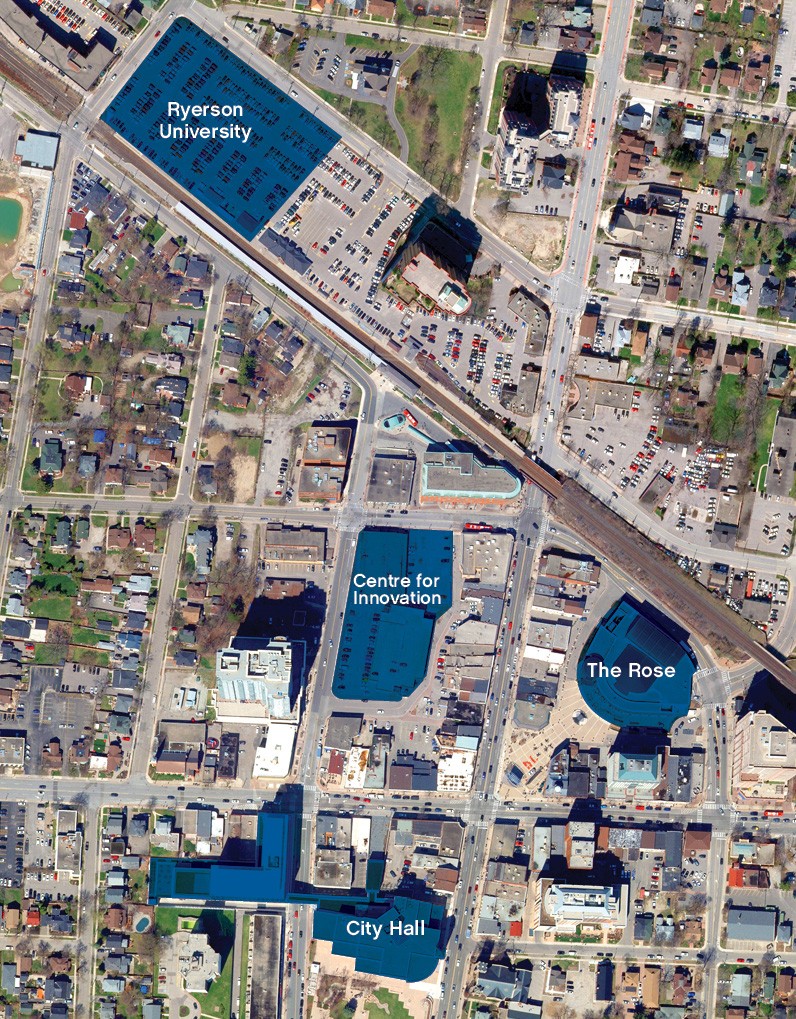
Major infrastructure projects, such as a new downtown university campus and a centre for innovation, have to be funded. The previous council committed an unprecedented $150 million for the joint projects, but the city will not say if budgeting for the plan and other needed projects such as flood mitigation, Downtown Reimagined, Brampton 2040 Vision, the Main Street LRT, the city’s share of hospital expansion and critical infrastructure repair has been incorporated into Brampton’s overall financial strategy.
City treasurer David Sutton provided no hard answers to questions from The Pointer about how the city plans to raise its own commitment towards the post-secondary education plan — whether through a levy, an increase on the regular property tax bill or by incurring external debt.
However, he did say that, “At present, all City departments are going through their respective budget processes. The leadership team is currently evaluating and prioritizing the budget program and various projects which includes consideration of recent decisions and announcements on major City initiatives such as (the) University, Centre for Innovation, Downtown Reimagined and LRT.”
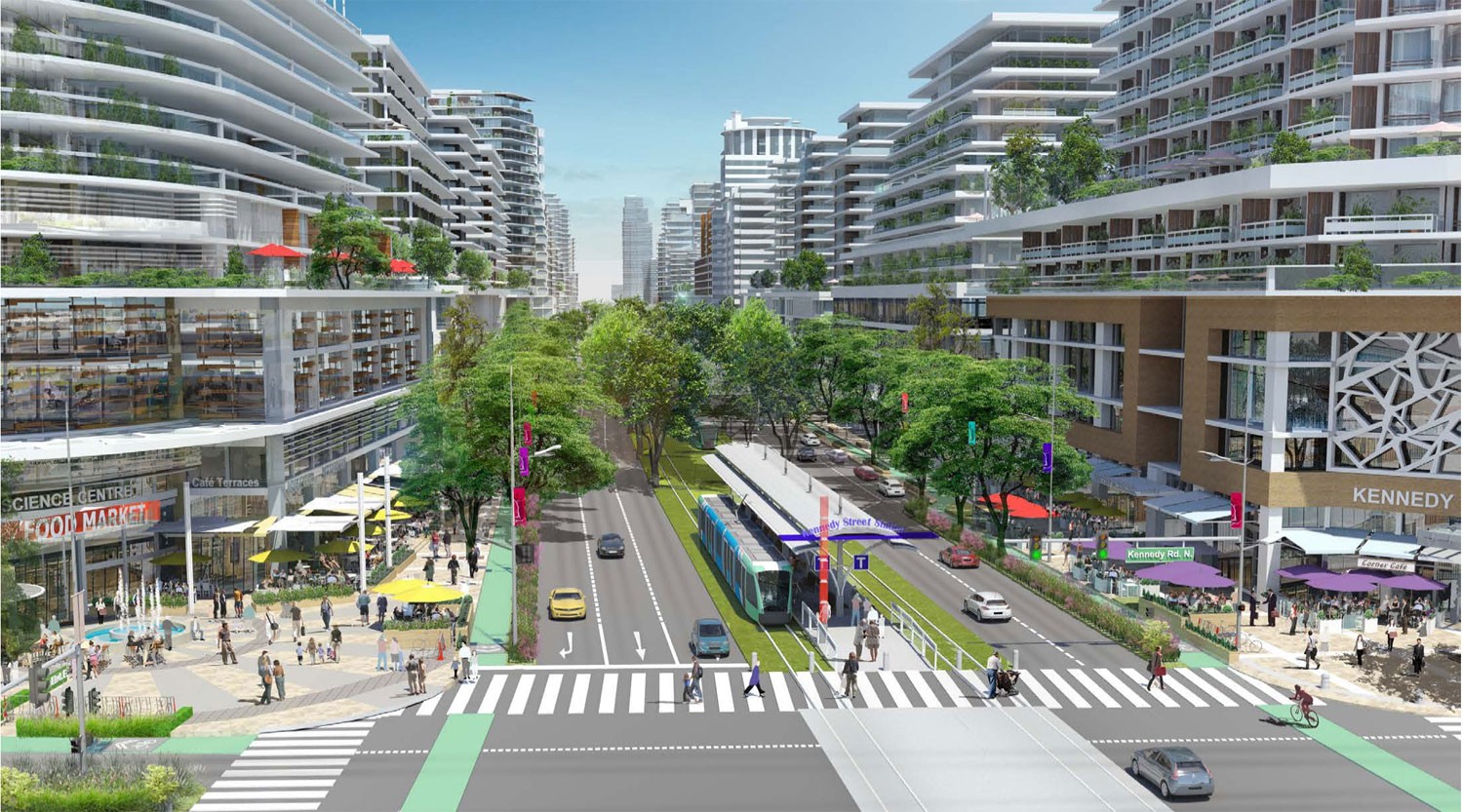
A rendering of the city centre and LRT of the future as part of the Brampton 2040 Vision plan.
The Downtown Reimagined project to enhance and make repairs to the city-centre, which could cost the city $45 million or more, depending on how extensive underground costs are, has already been cancelled, for now, by the new council. It's unclear how other capital projects to support the city's approved ambitious Brampton 2040 Vision plan will be paid for.
The city’s proposed three-year budget for 2018 to 2020 included a $16.5-million increase in just the operating budget (the majority of which, about 58 percent, is for salaries and employee benefits) for 2018 over 2017, a further $24.6-million increase in 2019 and a nearly $21.9-million increase for the operating budget in 2020.
For the 2018 budget, it was estimated that about 70 percent of the city’s revenues would come from property taxes and 24 percent from user fees.
The proposed 2019 budget included a 5.4 percent increase for just the city’s share of the overall tax bill, which includes the Region of Peel portion and the province’s share for education.
The proposed City of Brampton amount included an $80 million increase in the capital budget, from $258 million in 2018 to $338 million in 2019. If the city goes forward with its proposed capital budget plan that would be a 31 percent increase in the capital budget in 2019, compared to the amount that was proposed for 2018. With Mayor Brown calling for a zero percent tax increase this year, it remains to be seen how the city will reconcile its proposed operating and capital budgets for this year.
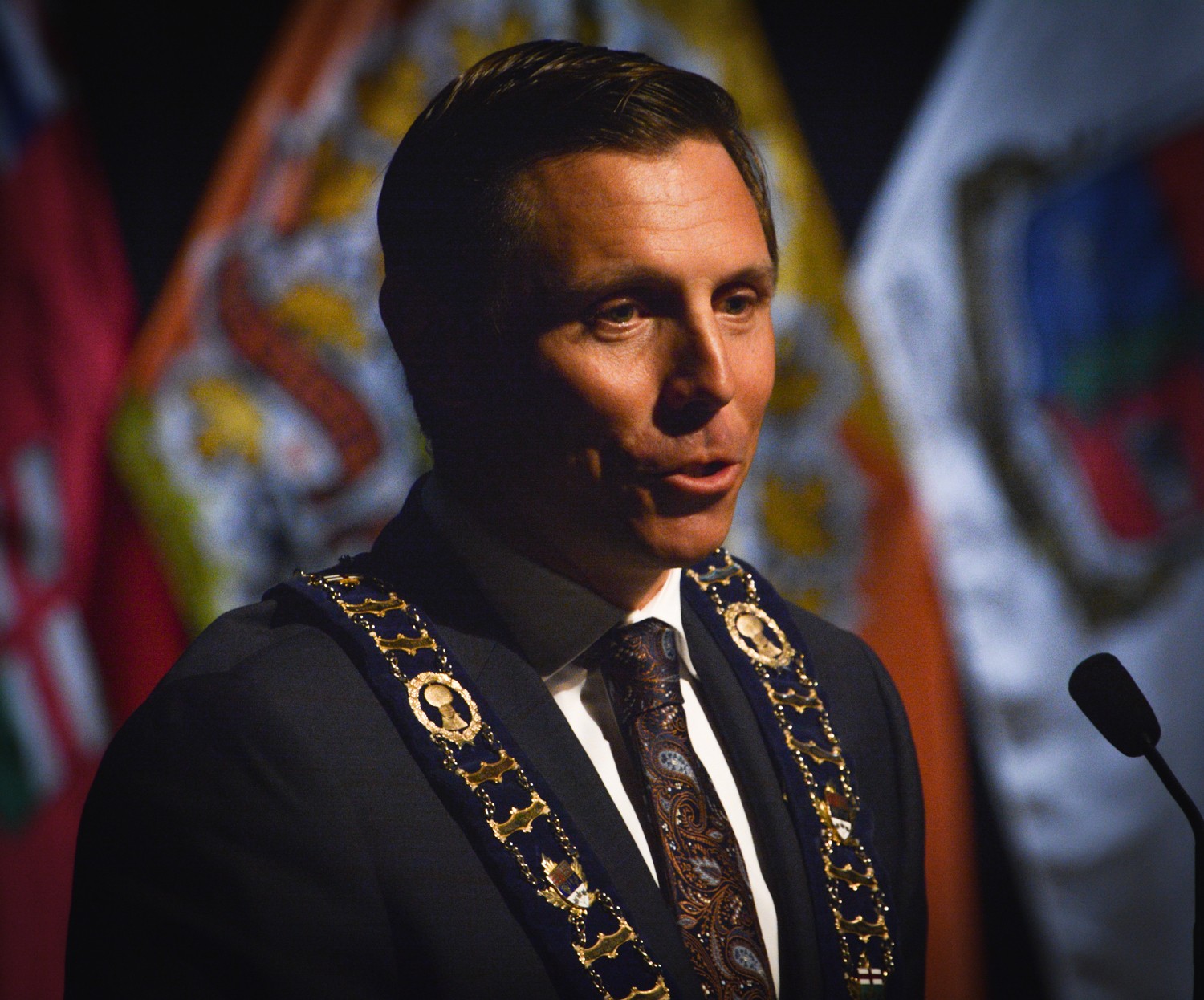
Last December, city staff published a report outlining the budget process for the 2019 to 2021 time horizon. The fledgling council, which has many new faces, will have to comb through every dollar of the city’s spending and set priorities for the coming years. Even though the approved expenditures will be for a multi-year term, council will still be required to revisit the budget each year.
“Municipalities are required to prepare and adopt a budget on an annual basis, as per the Municipal Act, 2001, section 290. The budget process report provides Council and the Public with the processes and timelines necessary to meet legislative requirements and achieve the strategic objectives of the organization,” explains the staff report.
Official deliberations by the budget committee will not begin until March 18 and will probably continue through March 20. Extra days have been allotted in case council needs more time to discuss the budget, so deliberations could also be held on March 25 and 26.
But before all that happens, staff will prepare a proposed budget for council to look over by Feb. 25. The idea is that, in the days after councillors get their hefty binder, they will meet with staff for individual consultations and feedback on the budget documents for both the operating and capital budgets.
They are “distributed well in advance of budget deliberations to provide Council and the Public sufficient time to review and provide feedback,” the report says.
If you’re wondering what’s in that mysterious binder, it will be available to the public on Feb. 25, too. That phase of the process is expected to last until March 8, when the budget committee will have what it needs to begin deliberating.
The budget is expected to get final approval at a special council meeting set for March 27. It’s worth noting that Mississauga and Toronto have already scheduled their city’s budget committee meetings, whereas Brampton’s official calendar has yet to list the meeting times.
The same report requests staff to prepare baseline tax targets for the upcoming budget, which will include operating cost increases “set at Bank of Canada’s targeted core inflation rate of 2 percent,” and a 2 percent annual increase in the infrastructure levy, as well as determining new or enhanced services.
Sutton did not paint a rosy picture in his statement for the approved 2018 to 2020 budget document. “While the City's annual infrastructure levy increase demonstrates our commitment to closing the infrastructure gap, it is clear that more funding is needed to keep pace with our growing asset repair and replacement needs,” he wrote.
“We are not unique in this respect, as all municipalities across Canada are experiencing this same funding challenge. We continue to work on behalf of our community with our municipal partners to advocate at both the federal and provincial levels of government for a greater local share of revenues to assist in meeting these funding needs. Without access to new funding streams, the City’s infrastructure maintenance backlog will continue to grow for the foreseeable future.”
One anticipated big-budget item is funding for the city’s proposed Ryerson University campus. The project’s future fell into uncertainty last October when Premier Doug Ford cancelled the province’s commitment towards the project, some $90 million.
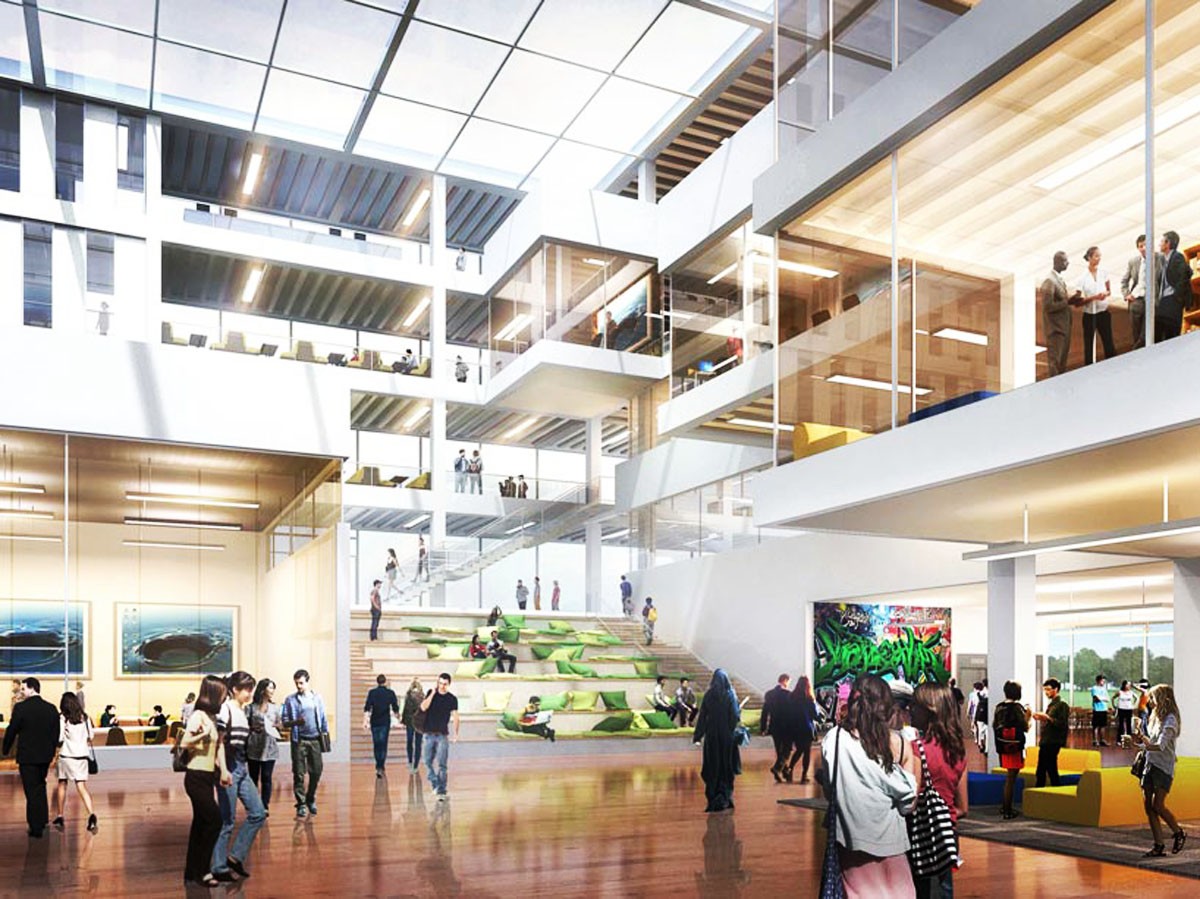
While the city struggles to recoup that cash, questions are still in the air about where the $150 million the city has already committed will come from. The amount breaks down as $50 million over 10 years for a joint Sheridan College/Ryerson University facility downtown and $100 million for the associated Centre for Education, Innovation and Collaboration.
The first real test of council’s ability to handle the cash-strapped city’s finances is looming over the horizon. It may be up to the new council to bring some fresh ideas to the table.
Ahead of the city's budget deliberations, Peel Region will be handling discussions on its own budget throughout the month of January.
A trio of meetings are scheduled for the last three weeks of the month, on Jan. 17, 25 and 31, all set for 9:30 a.m. to 3:30 p.m.
With the region finalizing its finances for 2019 ahead of the city, Brampton will know how the amount that will be handed down from the region to support its budget, will impact the city’s property owners who pay into the regional tax bill.
On average, 41 percent of a Peel resident's property tax bill goes to the Region, 39 percent goes to the local municipality, and 20 percent goes to the province for education.
Submit a correction about this story


